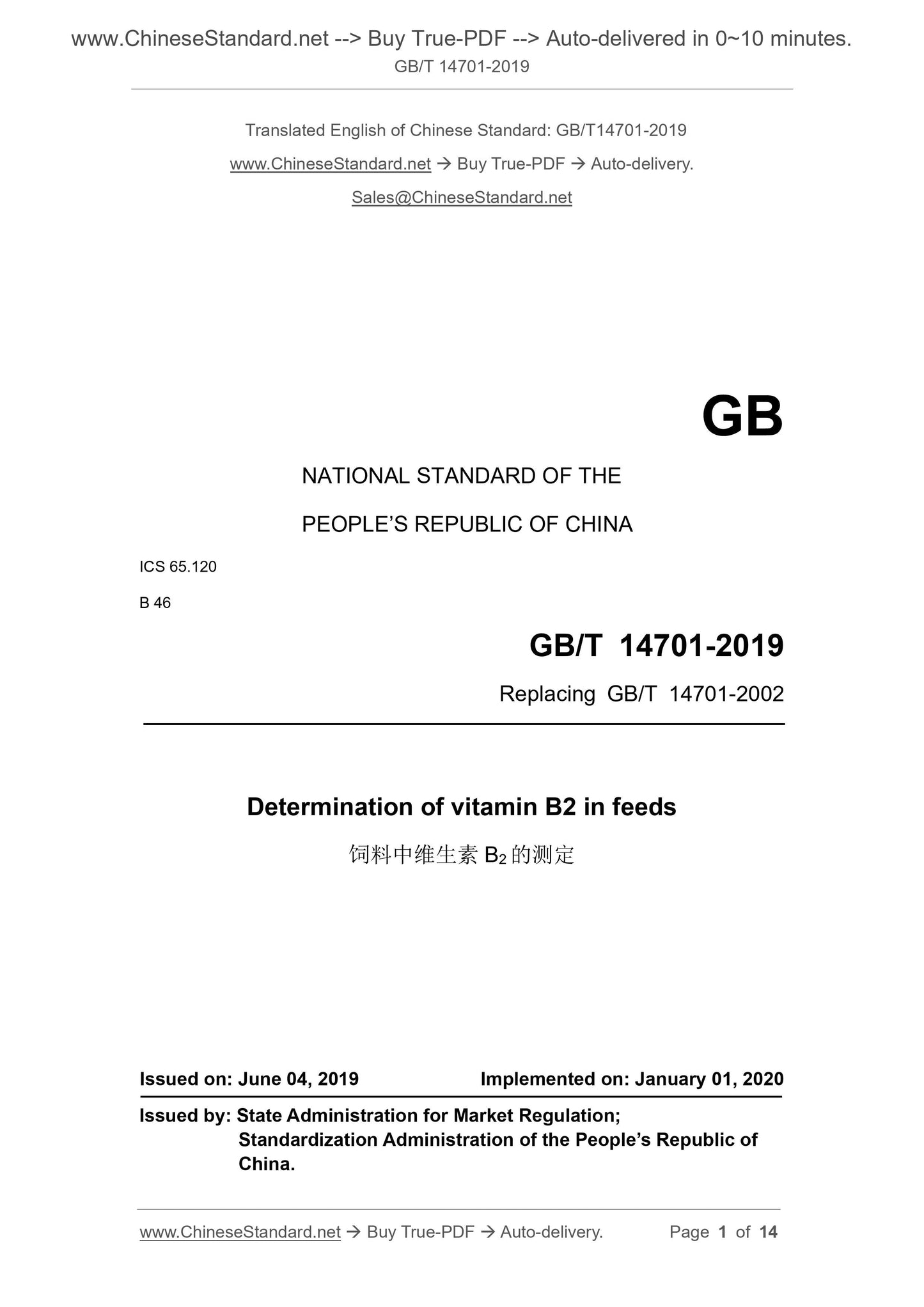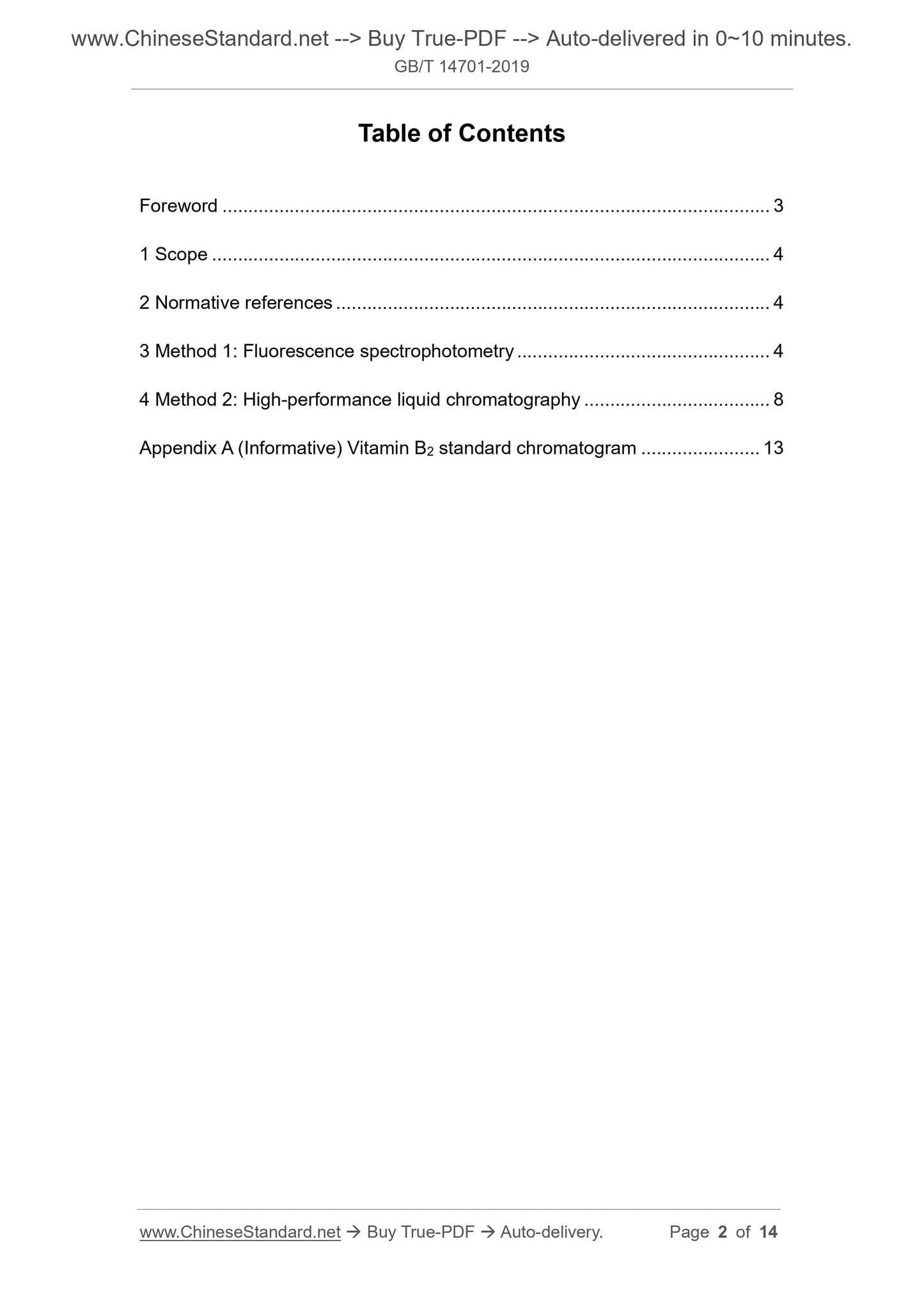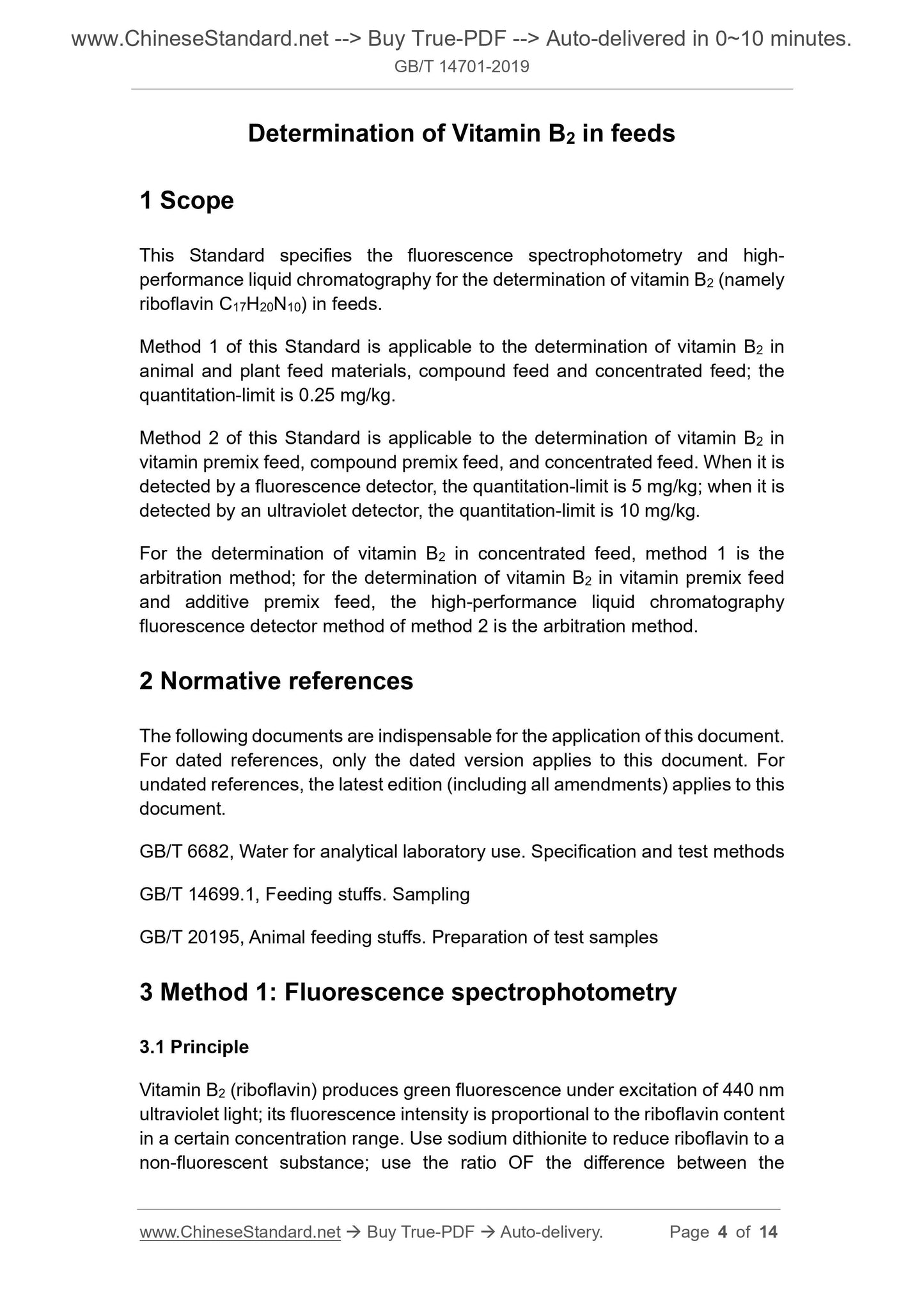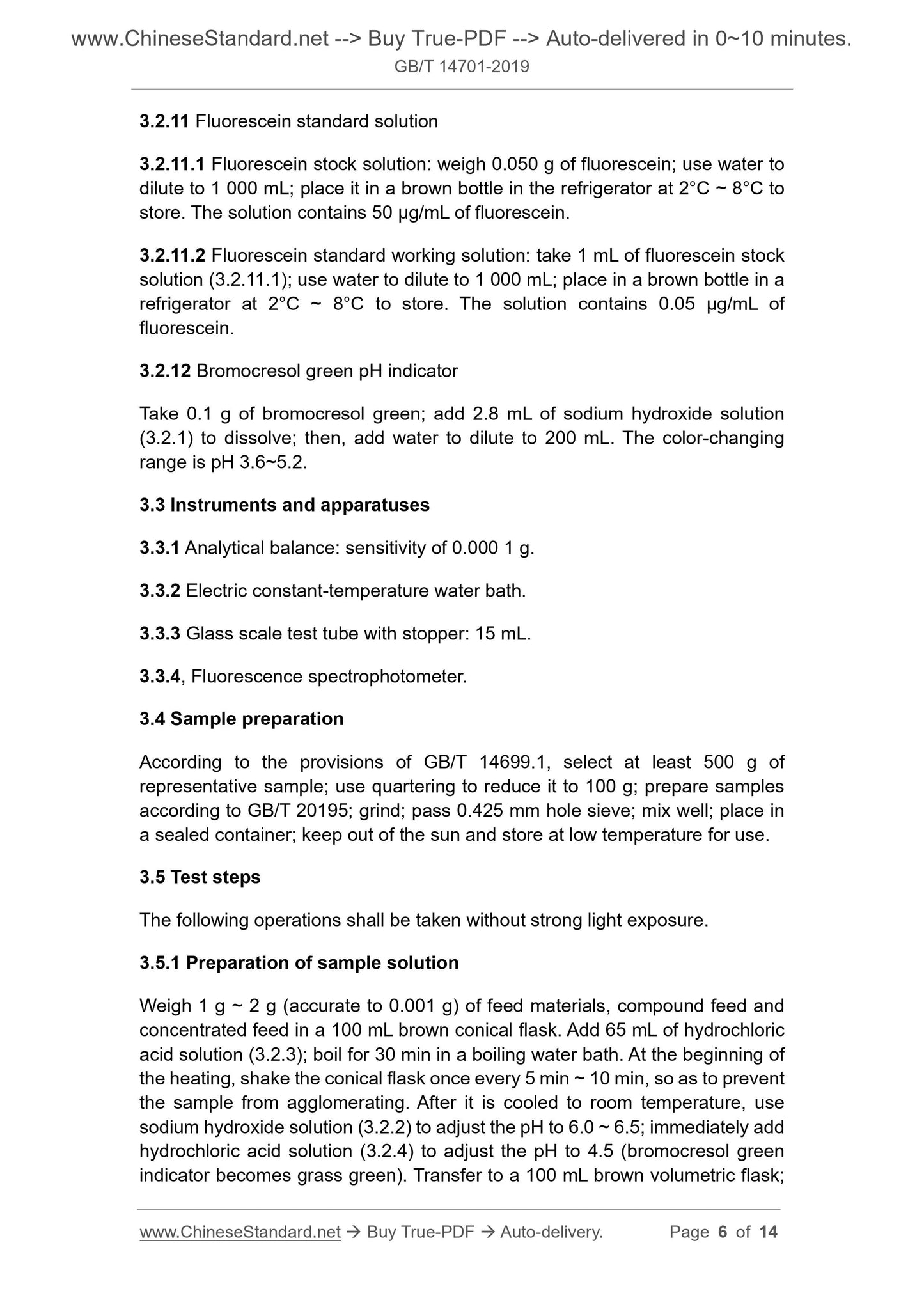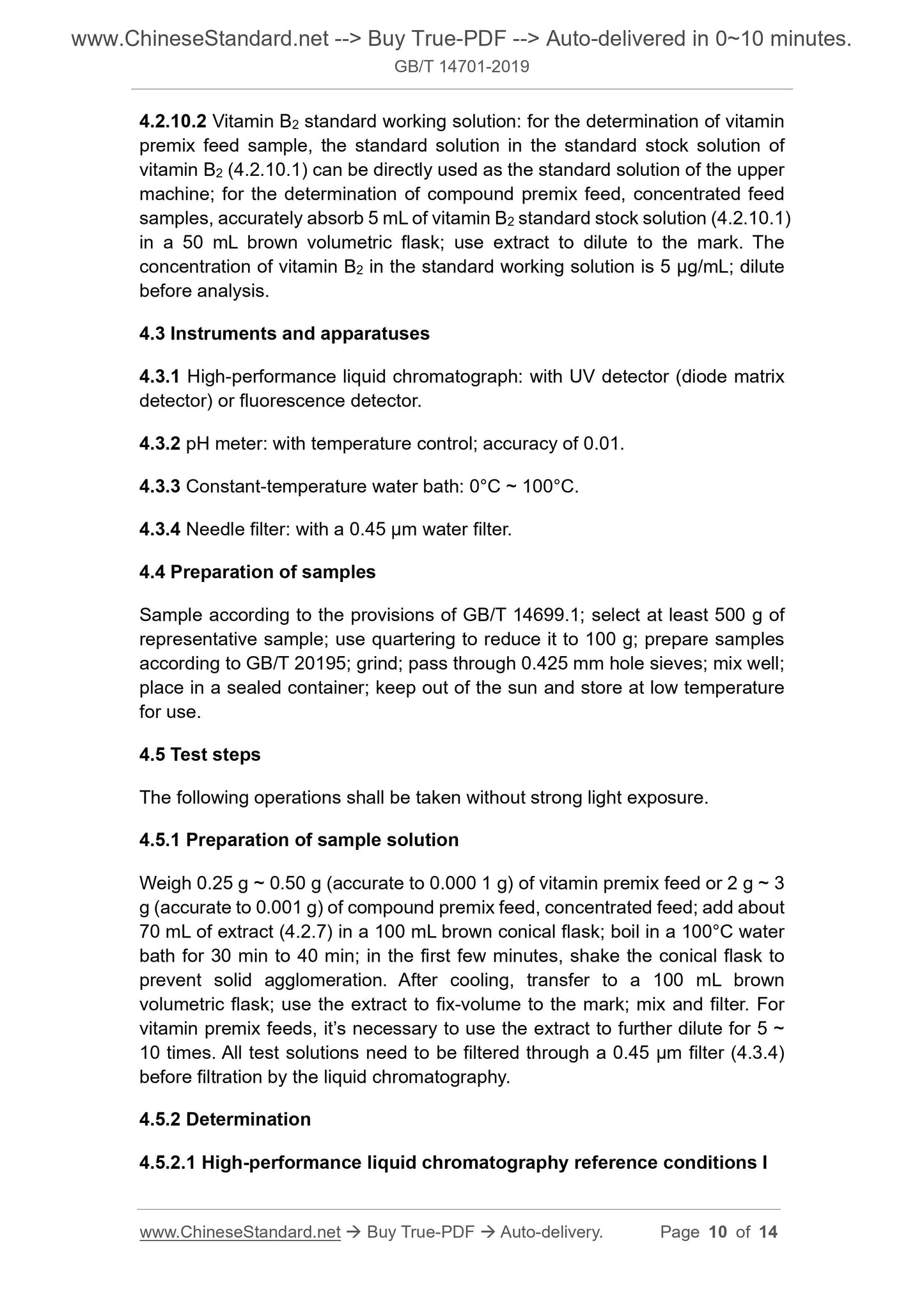1
/
of
6
www.ChineseStandard.us -- Field Test Asia Pte. Ltd.
GB/T 14701-2019 English PDF (GB/T14701-2019)
GB/T 14701-2019 English PDF (GB/T14701-2019)
Regular price
$130.00
Regular price
Sale price
$130.00
Unit price
/
per
Shipping calculated at checkout.
Couldn't load pickup availability
GB/T 14701-2019: Determination of Vitamin B2 in feeds
Delivery: 9 seconds. Download (and Email) true-PDF + Invoice.Get Quotation: Click GB/T 14701-2019 (Self-service in 1-minute)
Newer / historical versions: GB/T 14701-2019
Preview True-PDF
Scope
This Standard specifies the fluorescence spectrophotometry and high-performance liquid chromatography for the determination of vitamin B2 (namely
riboflavin C17H20N10) in feeds.
Method 1 of this Standard is applicable to the determination of vitamin B2 in
animal and plant feed materials, compound feed and concentrated feed; the
quantitation-limit is 0.25 mg/kg.
Method 2 of this Standard is applicable to the determination of vitamin B2 in
vitamin premix feed, compound premix feed, and concentrated feed. When it is
detected by a fluorescence detector, the quantitation-limit is 5 mg/kg; when it is
detected by an ultraviolet detector, the quantitation-limit is 10 mg/kg.
For the determination of vitamin B2 in concentrated feed, method 1 is the
arbitration method; for the determination of vitamin B2 in vitamin premix feed
and additive premix feed, the high-performance liquid chromatography
fluorescence detector method of method 2 is the arbitration method.
Basic Data
| Standard ID | GB/T 14701-2019 (GB/T14701-2019) |
| Description (Translated English) | Determination of Vitamin B2 in feeds |
| Sector / Industry | National Standard (Recommended) |
| Classification of Chinese Standard | B46 |
| Classification of International Standard | 65.120 |
| Word Count Estimation | 10,189 |
| Date of Issue | 2019-06-04 |
| Date of Implementation | 2020-01-01 |
| Issuing agency(ies) | State Administration for Market Regulation, China National Standardization Administration |
Share
